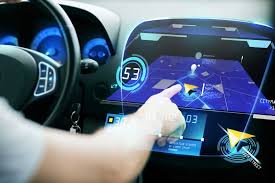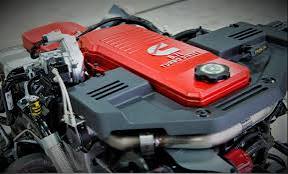What is A Vehicle Computer System?
5 min read
Revolutionizing the way we drive, vehicle computer systems have become an integral part of modern-day automobiles. From monitoring engine performance to enhancing safety features, these advanced technological marvels are powering our vehicles like never before. But what exactly is a vehicle computer system?
In this blog post, we will delve into its history, how it works, and its benefits. So fasten your seatbelts as we take you on an exciting ride through the world of vehicle computer systems! Get ready to discover how these intelligent machines have transformed the way we experience the open road.
History of Vehicle Computers
Vehicle technology has evolved from mechanical reliance to the integration of electronic control modules (ECMs), initiated by General Motors in the early 1970s. Initially managing engine performance, ECMs paved the way for advanced computer systems in modern vehicles. The 1980s saw the introduction of onboard diagnostics (OBD) systems, streamlining issue diagnosis and improving maintenance.
In subsequent decades, rapid evolution led to vehicle computers integrating into various components, overseeing functions from entertainment to safety features like automatic braking. Today’s interconnected modules enhance reliability, efficiency, and overall performance, transforming driving experiences.
Continuous innovation and increased computing power have significantly impacted modern automobiles, showcasing the intricate workings of these complex machines.
How Vehicle Computers Work
Understanding how vehicle computer systems work provides a fascinating insight into the intricate technology that powers modern cars. To recap:
- Components of the System:
- The vehicle computer system comprises a network of sensors, processors, and actuators that work together to collect data and perform various tasks.
- Role of Sensors:
- Sensors act as the eyes and ears of the system, detecting changes in temperature, pressure, speed, position, and other variables across different parts of the car.
- Central Processing Unit (CPU):
- The CPU serves as the brain of the system, receiving data from sensors and making decisions based on complex algorithms and predefined parameters.
- Decision-Making Process:
- The CPU analyzes incoming data and, if necessary, makes decisions for corrective action. For example, it may flag issues like engine overheating or excessive tire wear.
- Actuators and Physical Adjustments:
- Actuators receive signals from the CPU and are responsible for physically changing or adjusting aspects of the vehicle’s performance. This includes components like fuel injectors, anti-lock braking systems, and automatic transmission controllers.
- Real-Time Operation:
- All these processes occur seamlessly in real-time while driving, allowing the vehicle computer system to continuously monitor and optimize performance.
Understanding this process helps us appreciate the complexity and efficiency of vehicle computer systems, which contribute significantly to the safety, performance, and overall functionality of modern automobiles.
Types of Vehicle Computer Systems
Adaptive Cruise Control (ACC)
- ACC employs radar technology and computerized systems to maintain a safe following distance and speed from the vehicle ahead. It automatically adjusts the vehicle’s speed based on the traffic conditions, contributing to a smoother and more convenient driving experience.
Electronic Stability Control (ESC)
- ESC is designed to enhance vehicle stability by detecting and reducing skidding or loss of traction. The computer system continuously monitors various factors, including steering input and individual wheel speeds, to apply brakes selectively and help the driver maintain control during challenging driving conditions.
Powertrain Control Module (PCM)
- PCM serves as an integrated control unit that oversees multiple functions within the powertrain, including the engine and transmission. It coordinates various subsystems to optimize overall performance, fuel efficiency, and emissions.
Climate Control Module
- Responsible for regulating the heating, ventilation, and air conditioning (HVAC) systems, the climate control module uses sensors to monitor interior and exterior temperatures. It adjusts settings to maintain the desired cabin climate, providing comfort for occupants.
Navigation System
- The navigation system’s computer module processes GPS data and other relevant information to provide real-time navigation assistance. It calculates routes, offers turn-by-turn directions, and may integrate with other systems for additional features.
Parking Assist System
- Utilizing sensors and cameras, the parking assist system’s computer module assists drivers in parking by providing visual or audible cues to avoid obstacles. Some advanced systems can even take control of steering during parking maneuvers.
These vehicle computer systems collectively contribute to the overall functionality, safety, and convenience of modern automobiles. Each system specializes in a specific aspect, working in harmony to provide a sophisticated and integrated driving experience.
Also See: PI123| COMPLETE INTRODUCTION, IMPLICATION, AND IMPORTANCE
Benefits of Using a Vehicle Computer System
A vehicle computer system offers numerous advantages that enhance the overall driving experience.
Improved Efficiency and Performance
- Advanced sensors and algorithms in-vehicle computer systems monitor components in real-time, optimizing fuel consumption and managing the engine for better overall performance.
Enhanced Safety Measures
- The system continuously analyzes data from various sources, including ABS sensors, airbag control modules, and traction control systems, to detect potential hazards and malfunctions. This allows for early detection and proactive measures to prevent accidents or minimize their impact.
Diagnostic Capabilities
- Vehicle computer systems provide valuable diagnostic information, detecting issues with engine components, emissions systems, or transmission problems before they escalate. This enables proactive maintenance planning and helps prevent costly repairs.
Integration of Entertainment Features
- Modern cars equipped with infotainment systems offer seamless connectivity options such as Bluetooth pairing for hands-free calling and music streaming capabilities, enhancing the overall driving experience.
GPS Navigation Functionality
- Some vehicle computer systems include GPS navigation functionality, providing accurate turn-by-turn directions without the need for external devices.
Eco-Friendly Practices
- Certain systems offer eco-driving features that analyze driving patterns and provide feedback on achieving optimal fuel efficiency, contributing to environmentally friendly driving practices.
Increased Resale Value
- A reliable vehicle computer system increases resale value by offering potential buyers assurance regarding safety features and technological advancements integrated into the vehicle.
In conclusion, the benefits derived from a vehicle computer system range from performance optimization and safety enhancements to diagnostic capabilities and entertainment features. These collective advantages contribute to making driving experiences more efficient, enjoyable, and technologically advanced.
Challenges and Limitations of Vehicle Computers
While vehicle computer systems have revolutionized the automotive industry, they are not without their challenges and limitations.
System Failures
- Challenge: Potential glitches or malfunctions leading to unexpected behavior or component failure.
- Implication: Reliability becomes an important concern, impacting both safety and user trust.
Complexity
- Challenge: Increasing intricacy of computer systems in technologically advanced vehicles.
- Implication: Diagnosis and repair become more challenging, necessitating specialized knowledge and tools.
Cybersecurity Concerns
- Challenge: Growing risk of cyberattacks with connected vehicles and autonomous features.
- Implication: Manufacturers must prioritize robust cybersecurity measures to protect user data and ensure the safe operation of vehicles.
Compatibility Issues
- Challenge: Ensuring seamless integration among various components and software versions.
- Implication: Lack of compatibility may lead to operational disruptions and difficulties in maintaining a unified vehicle network.
Cost
- Challenge: High development and implementation costs for sophisticated vehicle computer systems.
- Implication: Affordability becomes a concern for consumers, potentially limiting the widespread adoption of advanced technologies.
In conclusion, manufacturers are actively addressing challenges in-vehicle computer systems through ongoing innovation. Efforts focus on improving reliability, simplifying diagnostics, enhancing cybersecurity, ensuring compatibility, and making advanced vehicle technologies more accessible.







